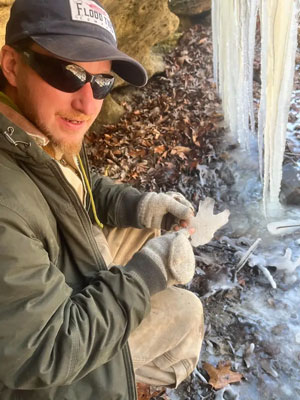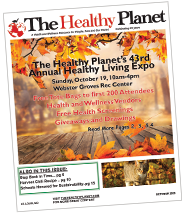
Photo: Steve Calloway, Executive Director of World Space Conservation
Before becoming a trail and state park, the Katy Trail was formerly known as the “MKT Railroad”, nicknamed the K.T or “Katy” by railroad employees. When the railroad company closed operations in 1986, the Department of Natural Resources acquired the land as part of the “rails to trails” project. In 1987 philanthropist Edward D. Jones and his wife Pat donated 200 thousand dollars to the Conservation Federation of Missouri Charitable Trust to acquire the rights. Over the preceding years the Joneses donated around 2 million dollars to complete the construction of the trail.
Today, nearly 400,000 visitors use the trail yearly, but the property has become largely degraded, infested with invasive plant species like Bush Honeysuckle, which releases toxins that kill off many native plant species and prevent them from reproducing, resulting in the loss of native habitat. World Space Conservation has already begun the task of addressing this issue, restoring and revitalizing the Trail area, improving not just the health and biodiversity of the region but providing visitors with better views of the river and wildlife. Our work can already be seen and is recognized in the St. Charles county area.
But the clearing of invasive plants is just the beginning. The next step in the restoration and revitalization of the area is to re-establish local ecotypes of native plant species, like the Virginia Bluebell (Mertensia virginicia), Green Dragon (Arisaema dracentium) and American Sycamore (Platenus occidentalis). World Space watershed conservation techniques are also being applied to the area around Duckett Creek, improving the ecological viability of the area for local and migratory wildlife species. Migratory birds such as the American White Pelican (Pelecanus erythrorhynchus) and Bald Eagle (Haliaeetus leucocephalus) are a few of the beloved favorites for visitors to find along the trail. Nature based solutions are among the most cost effective ways to reduce flooding. Every dollar spent to restore wetlands results in direct flood reduction benefits.
World Space Conservation and the community are passionate about this endeavor. The majority of our funds are community donations. With your continued help World Space can restore this cherished landmark even further. If you are interested in helping visit our website worldspaceconservation.org or call one of our outreach coordinators at 314 288-5036.


